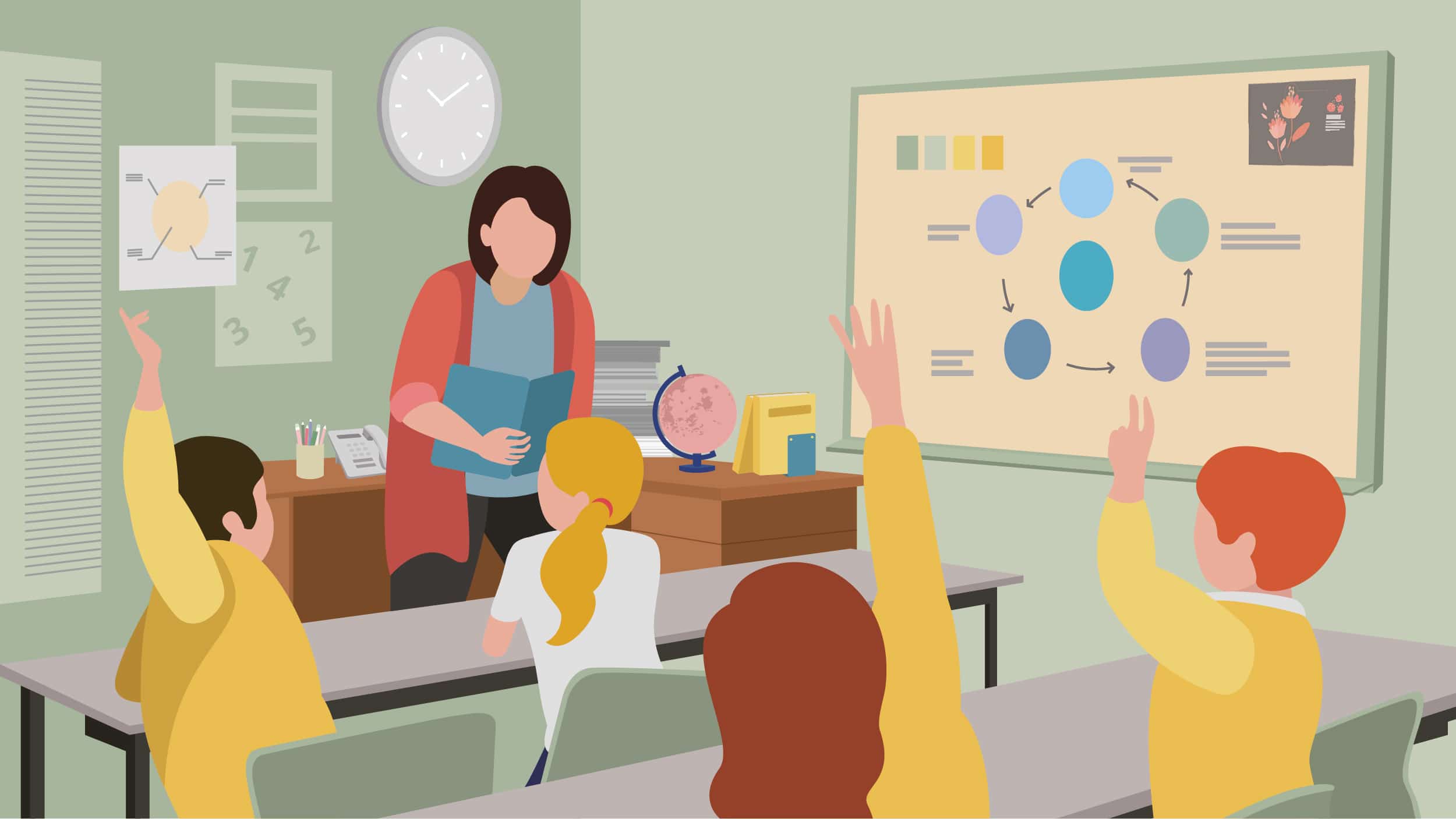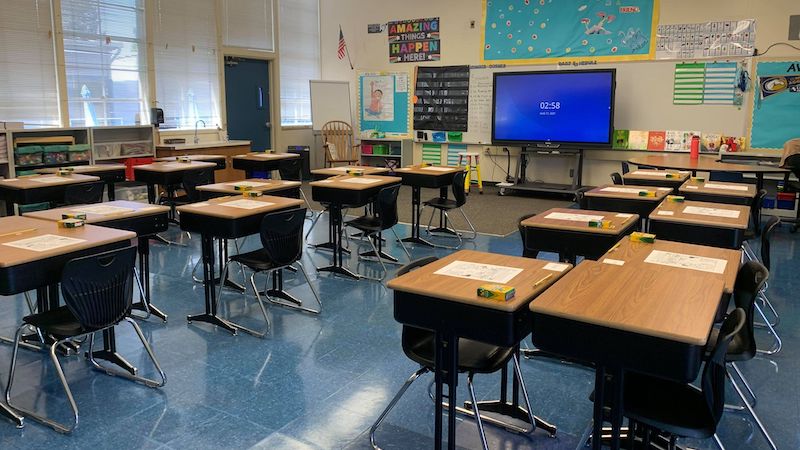
Understanding how seating arrangements affect student learning has the potential to be highly beneficial to classroom teachers. Of the many aspects of the physical environment discussed here, classroom seating arrangement is the simplest to understand, the most within a teacher’s control, and one of the most effective behavior interventions; furthermore, it rarely conflicts with any of the other aspects (Bicard et al., 2012; Wannarka & Ruhl, 2008). (An example of conflict between aspects would be adding carpeting to assist with acoustics, thus causing lower air quality because of increased dust particles).
The available research on types of seating arrangements explains that row seating is ideal for individual work, keeping all students (including students with track records of poor behavior) on task (Fernandes, 2009; Wannarka & Ruhl, 2008; Betoret & Argia, 2004; Budge, 2000; Edwards, 2000). Student-centered group arrangements on the other hand (e.g., 4 desks together, circles) are the preferred seating arrangement (Fernandes, 2009; Sztejnberg & Finch, 2006) in groups that are smaller and/or have a history of being highly on task and capable of handling advanced group work. importance

Conclusions
The aspects of the physical environment and their effects on learning have now been clearly identified and associated with groups of individuals (e.g. teachers, administrators, school boards, school building designers) who are most likely to benefit from knowledge of those factors and their effects on learning. This endeavor has produced significant findings about the physical environment of the classroom, leading to the following conclusions about the magnitude of certain environmental factors.
Of the 10 aspects of the physical environment that were identified and discussed, research on air quality in schools clearly indicates that air quality should be given the highest priority over the other factors. Earthman (2002) explains that air quality as it relates to schools is such a crucial element of the physical environment that schools that allow poor air quality to remain a constant are ultimately placing students’ safety at risk. While the other nine factors of the physical environment should be integrated appropriately into a school, proper air quality is an essential element for life. The seriousness of this can be further identified by the EPA’s 2000 statistic regarding student asthma, which estimated that over 10 million days of school are missed due to students suffering from asthma related illnesses due to air quality. Before the EPA’s estimate, Smedje and Norback’s 1999 study stated what would become supporting results: namely, that among the schools they surveyed, those with higher quality ventilation systems assisted in lessening asthma related sick days among their students. Furthermore, Myhrvold, Olsen, and Lauridsen (1996) detailed the seriousness of poor air quality by revealing that a common issue with poor ventilation systems is the increased presence of carbon dioxide, which is deadly in large quantities.
Following this identification of air quality as the highest priority aspect of the physical environment, it is this researcher’s recommendation to develop a scale on which to place the currently established aspects of the physical environment that affect learning in order to compare the significance of these factors on student learning. Figure 1.2, suggested by this researcher, is one possible chart.
Another discovery was the strong influence of seating arrangements on student behavior in the classroom. While many of the other aspects of the physical environment’s effects on learning were clearly out of the average classroom teacher’s control, seating arrangement proved to be both well within the control of the teacher and highly effective in increasing student learning and achievement. Given that research concerning classroom seating arrangements is plentiful, relevant, and of the most direct use to classroom teachers who wish to ensure effective learning, further examination of such research is highly recommended to any and all who teach in a classroom.
Another unexpected conclusion that has been drawn is that technology is indeed an aspect of the physical environment, one that is far more important than educators might realize at first glance at the research. The primary source for this conclusion is Brooks’ 2010 study described above. The in-depth results of the study described two identical biology courses taught to first year university students, one in a traditional classroom and the other in a properly technology-integrated classroom. The professors taught the same material in the same manner, the technology-integrated room’s instructor only adjusted instruction when use of the room’s technology was appropriate. The results showed the technology-integrated room’s students outperformed the traditional room’s students due to the efficiency gained on behalf of the technology students. The technology-integrated room was equipped with a round desk with flat computer screens (comparable to a stationary computer Tablet lying flat) for personal use and a larger, center, flat screen to be used for the display of items for group use and collaboration. This enhanced ability to learn collaboratively in an efficient manner not only allowed the technology-integrated students to excel, but also allowed students with low ACT scores (who were assumed to be underperforming) to excel beyond the higher scoring ACT students in the traditional classroom. This study likely marks the beginning of a time in which technology is accepted as a clear aspect of the physical environment of the classroom.
Based on all of the synthesized research, recommendations, and conclusions provided within this research post, educational researchers would be wise to move forward with educational research projects that are likely to delve even deeper into the factors of the physical environment that effect learning, with a focus on air quality, technology, and seating.
Part 4 References
Budge, D. (2000). Secret is in the seating. Times Educational Supplement, 43, 26-27.
Earthman, G. I. (2004) Prioritization of 31 criteria for school building adequacy.
Edwards, C. (2000). Classroom discipline and management. New York, NY: Wiley.
